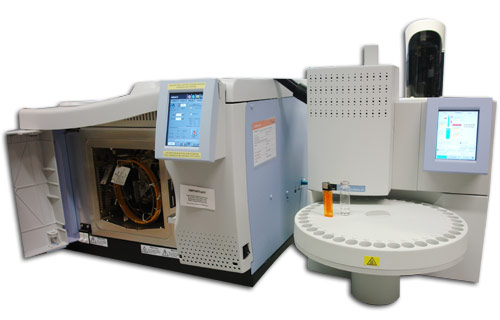
| OELCHECK test instrument: | PerkinElmer Clarus 680 with a TurboMatrix 40 Headspace Sampler |
| Sample quantity: | approx. 5 ml |
| Unit: | µl/l (ppm) |
| Test result: | dissolved gases in transformer oils (H2, O2, N2, CO2, CO, CH4, C2H6, C2H4, C2H2) |
| Analysis for: | insulating and transformer oils |
| Brief description: | The basic principle of the dissolved gas analysis is based on the capacity of the insulating oil to dissolve not only air from the atmosphere, but also cracked gases. These evolve not only from the natural ageing of oil and insulation materials, but above all when thermal or electrical defects occur in transformers. The extent of a defect and its increase over time (trend analysis) can be concluded from the quantity of dissolved gases in the respective oil. These dissolved gases can be measured with a gas chromatograph (GC). In order to ensure correct measurement results, the oil sample must not come into contact with ambient air. For this reason, as soon as the oil is sampled, it is poured into a 20 ml gas-tight glass syringe. A crimped head space bottle is flushed with argon to remove air. From the syringe, 5 ml of sample are injected directly through a canula via the 3-way stopcock. In the sampler, the gases are expelled from the sample at 80°C and are transferred in the gas chromatographs. The escaping gases are flushed with the aid of argon (carrier gas) through a separating column. Depending on the structure of the respective gases, these remain on the surface of the column for different lengths of time. In order to ensure clean separation, two different columns are used. Detectors recognise the individual components and record corresponding chromatograms. The larger the area under a peak, the greater the proportion of the corresponding component. |
| Statement: | Depending on the intensity of the individual gases, differentiation is made between different defects. Different conclusions can be drawn from the respective defects with regard to the consequences for the oil or paper insulation. These values and their diagnoses are noted in the laboratory report in compliance with evaluation procedures defined in the VDE standard. |
| Underlying test standard: | DIN EN 60567, DIN EN 60599, ASTM D3612 |